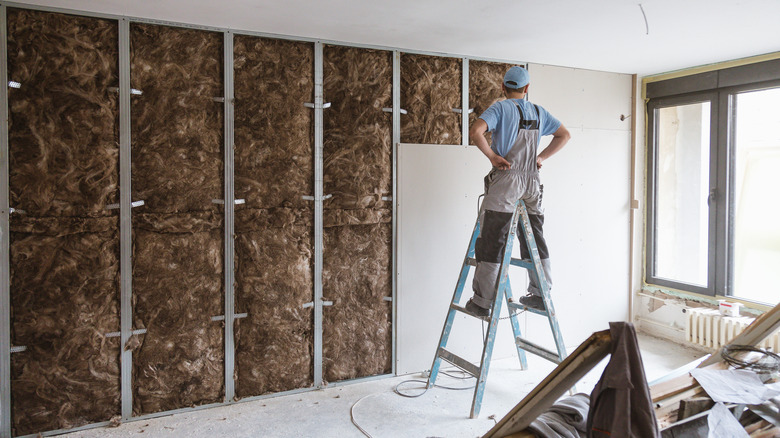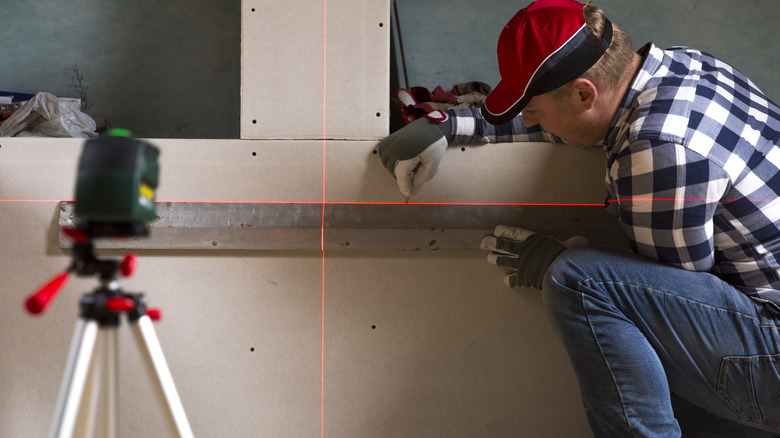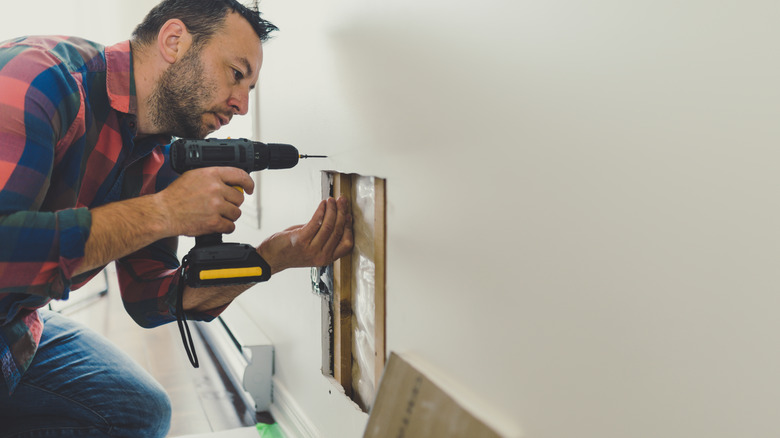What Are Drywall Shims And How To Use Them
Drywall shims are one of those items you hope you will never need, yet are incredibly grateful to have in the event your new construction or home renovation project runs into an issue during the drywall installation stage. Drywall shims are thin, sturdy pieces of cardboard typically measuring 45 inches in length and 1/16 inch thick — though you can find alternative options. These pieces help level areas of the wall or ceiling that are uneven. When you fix this issue before the drywall is installed, you'll have a perfectly flat surface to then paint and texture.
The irregularities drywall shims are brought in to fix most often occur in the framing itself or at the butt joints of two pieces of drywall. In the case of the latter, a couple of sheets of tape and some joint compound will not truly fix the issue. Plus, it's much easier to slide in a shim or two behind the drywall than it is to layer up drywall mud until the surface is even.
How to use a drywall shim
The need for a shim may not be truly noticeable until the drywall shows slopes and juts, but you can test the framing ahead of time with a laser level or straight-edge tool — if you see a gap, this is the area where you need to use a shim. A shim won't be attached to the drywall itself, instead, it gets stapled, nailed, or screwed into a stud and you may need multiple pieces if the gap is large.
Keep in mind that the more shims you use, the harder it will be to secure them in place. Any added thickness will also weaken the connection between the drywall and stud so try not to use more than a few shims in any one area. The goal is to create a consistent surface for an even drywall installation.
Drywall shims are relatively cheap and usually come in bundles of 100. If you won't need anywhere close to that, you can create your own shims using non-corrugated cardboard, sometimes called paperboard. This type of material is much easier to slice through and bend — simply measure, and cut to the desired length and width.
Where not to use drywall shims
Drywall shims can also be utilized on subfloors and baseboards. However, no matter where the application, you'll want to avoid places that experience high moisture levels. The cardboard design of most drywall shims means these pieces are absorbent and prone to mold or mildew buildup. You'll never want to use them outdoors nor should they be used around showers, sinks, windows, or exterior doors.
If any moisture-prone areas are in need of a shim, other types are available, including those made from stainless steel, composite, metal, plastic, and wood. These shims will cost more than the standard cardboard ones — and they could be harder to find, too, since they are less common. If you think you are likely to need a non-cardboard shim, check with your local hardware stores before beginning the project. A special order can be placed, and you'll avoid any potential delays.


